Identity, Projective Identity, Community Identity, Creative Projection, Imagineering, Immersive Experiences, Connections...
This is a study of Identity, Avatar and On-line Identity, Community
Identity and the use of an Analytical Eye to look at these with a view
to their educational potential.
In this artifact I will use the
It takes the form of an assemblage of a number of
artifacts and parts created during the "e-Learning and Digital
Cultures" course on the Edinburgh MSc in e-Learning. It arises through
their "temporal emergence" into an aggregated holistic view
(
I chose to introduce myself at the start of the Digital Cultures course with some images of collaborative artworks produced by on-line communities I have engaged with. One was a collection of images of eyes...
 |
All Eyes - Collective Art - Ghosts of a Chance at the Smithsonian American Art Museum's Luce Foundation Center, 2008. My contribution was "Ai Eye", an image of the eye of my virtual worlds avatar "Ai Austin". This has layers of meaning to me which I want to explore in this artifact. |
During the course I have explored self identity with my
I want to bracket the study and work on the course by returning to use an "Analytical Eye" to explore the individual works and their meanings to me, and try to relate that to the readings for the course and wider relevant literature.
I accompany the body of the text with a side bar which experiments
with a customised Typographical Visual "Neo-Grammar" expressing the
core "connectors" I have drawn in the work. It uses a layout style
with interactive linking capabilities well suited to on-line
communications of layers of content. Some other authors have explored
the idea of knowledge gathering through making a network of nodes and
connections, e.g.,
Identity
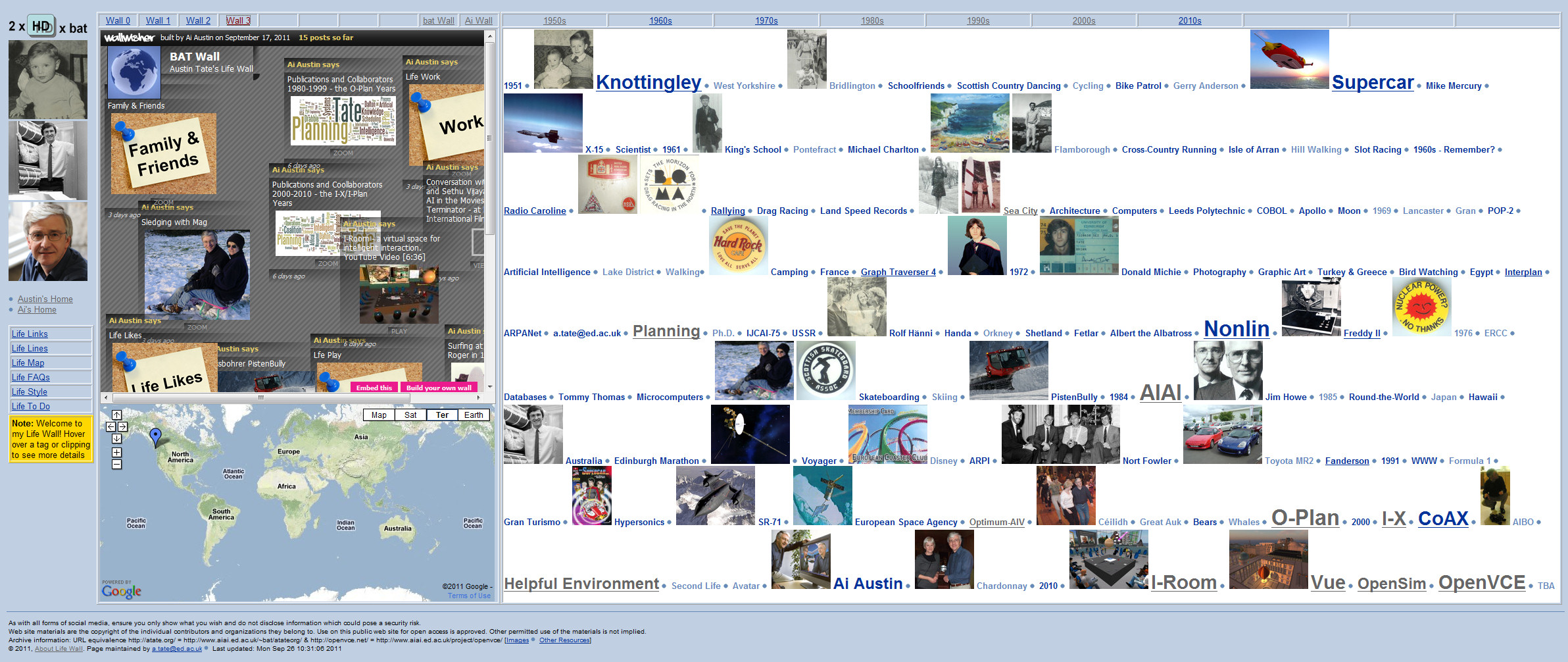
At the very start of the Digital Cultures course I began to collect
together some of the postings and imagery I used to introduce myself
to the class. I was fascinated to consider and discover what I wanted
to present, and was drawn to link this, initially, on a time line
including projects, experiences, interactions, roles, etc. But, I
went further and conceived the display format of the
This approach has much in common with the "Mystory" concept
of
Projective Identity
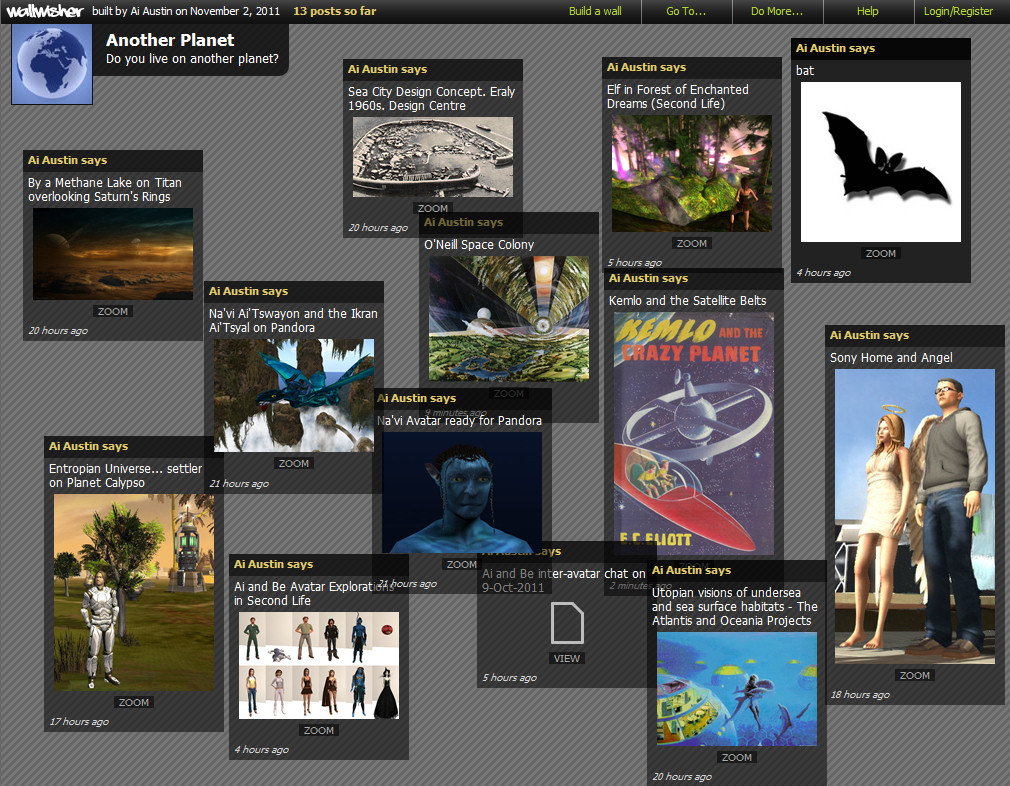
Perhaps most unsettling of all, the
For some deeper analysis of issues of gender
in projected identity, see
As the integrating theme of
To summarise how I relate to my avatars: I am Ai as he is me. Be is her and she is her. But we are all together.
My explorations on this theme include:
- AI - Avatar Identity - Digital Artifact
- Another Planet - Digital Artifact
- Think Like a ... - Digital Artifact
- Austin, Ai and the Personal Satellite Assistant - Blog Post
- Posthuman - Connected - Blog Post
- AI, Cyborgs and Robots - Blog Post
- By the Side of a Methane Lake on Titan - Blog Post
- Ai's Home Page - Na'vi and beyond (work prior to Digital Cultures Course)
I mean Projective Identity to be interpreted as a positive and mind
expanding phenomenon, as in
Projective identity - It means one is as a virtual role in the game. According toGee (2003) p55 , playing on two senses of the word "project," meaning both "to project one's values and desires onto the virtual character" and "seeing the virtual character as one's own project in the making, a creature whom I imbue with a certain trajectory through time defined by my aspirations for what I want that character to be and become."
Further to using one's imagination to forge a projected identity,
e.g. for an avatar in a virtual worlds, creativity can be unleashed by
designing a whole environment
(
And the creative design of such environments leads naturally on to involvement with others in their design and use... in communities...
Community Identity
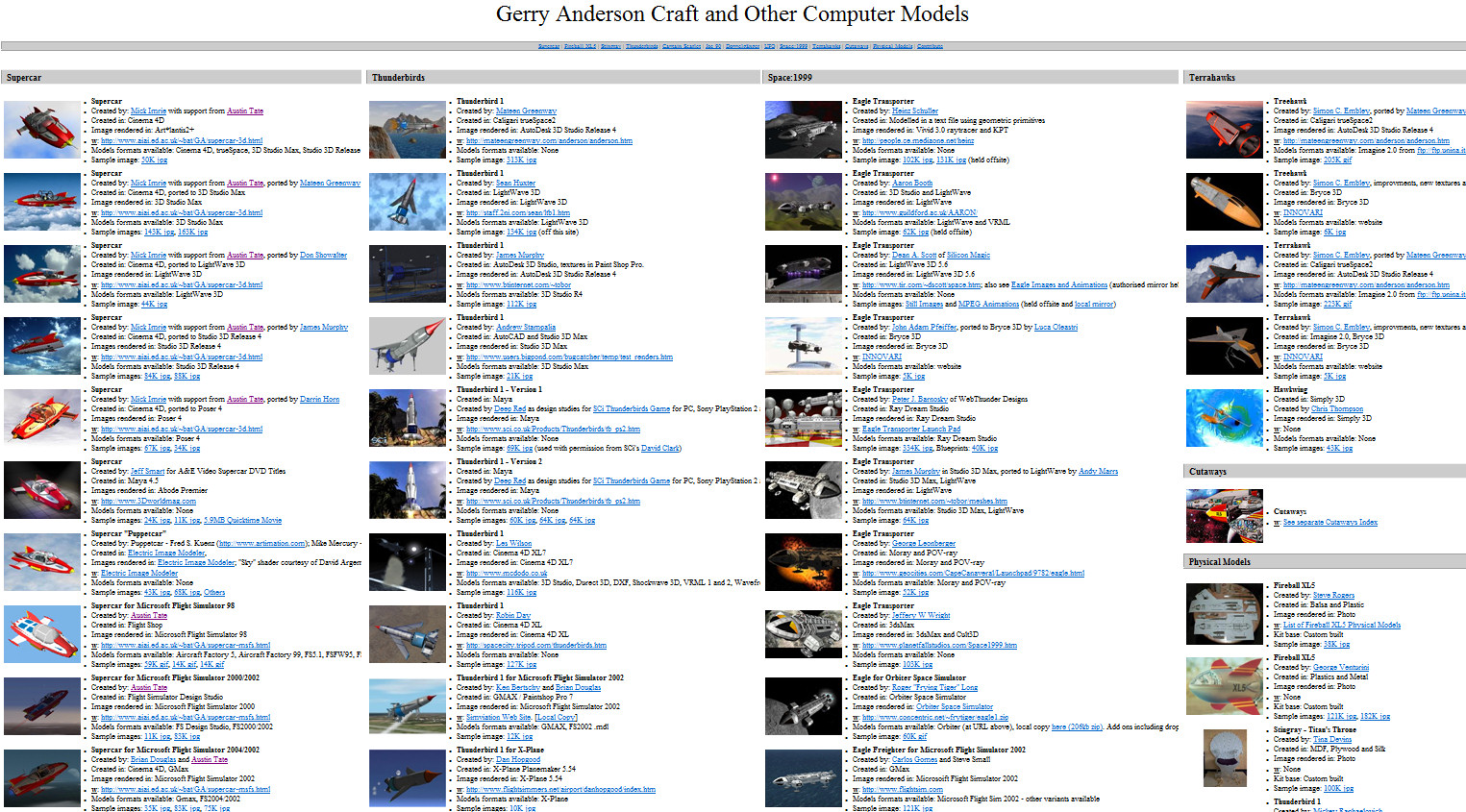
I very much like team projects and collaborative working, and have loved working in teams scattered across the globe on my projects and in my recreational interests.
As an aside, and showing my long term interest in the theme of community involvement, "All together now", as in the Beatles song, was the title for my first after dinner speech to colleagues and their partners at the start of a large research community effort in the US. Everyone was asked to join in the refrain... after a few glasses of wine.
I think the ideas in
Experience on a specific programme I have in mind in making these
observations is on the Coalition Agents eXperiment
(
For my virtual community ethnography I chose to study the Gerry
Anderson Model Maker's Alliance
(
Analytical Eye
As I
I can focus in and be deeply immersed in richly created worlds
whether portrayed from real life or in written and visual fiction. My
"projects" since my school days reflect these interests... a
secondary school project to study future cities with well designed
transportation, future city architectures with a favourite being the
designs of Corbusier (I was sketching local buildings that use
Corbusier influences even when at secondary school), modern homes with
an interest in Frank Lloyd Wright and his
I tend not to look back. I do not generally want to be exposed to negative and dystopian thinking. I don't like horror genres, as I found out when I was obliged to watch some chosen Digital Cultures Film Festival clips! I like a positive and happy ending. Disney suits me, expect the one where Bambi's mother dies!
As PI
It may be unusual, but I am in a position to listen to my own
avatars in conversation, and even referring to myself as they chat.
As part of creating a digital artifact for the Digital Cultures
course, I set up and initiated a free flowing conversation between two
clones of my avatars which were equipped with
This experience can be compared to a
I have used teleconference, distance collaboration and
other forms of multi-user environments for so long, and have had
experience of MUDs and MOOs as they grew from their text beginnings,
so that its a more natural experience for me... just like I would not
call using the telephone uncanny because I can heard a disembodied
voice from a distance. But I can certainly put myself into an avatar
shape or type which I know I find unusual or that feels
"wrong". I recommend one very nicely constructed site in
Second Life which allows for just such an experience.
See
As Eye
When discussing the nature of an individual's beliefs about
intelligence, knowledge or the learning process
(e.g.,
My experience in virtual worlds parallels some of the virtual world
encounters and experiences described by
I do not like to leave my avatar in a virtual world when I am "AFK" or
marked as "Busy" when I am not paying attention to those around me.
But, I see the PSA avatar as an entity that I could leave in
a community or social context to be
autonomous.. with interaction for other users only via IM/Text chat
through the indication on its "screen" showing my avatar on it when I
am accessible in world with me interacting through my "Ai" avatar. I
even have thought it would be okay with me to leave several such PSAs
in rooms I need to monitor but where I have to be elsewhere and am
multi-tasking. This is very much like the "IMPs" (Intelligent
Multimodal Participants)
(
The PSA probably represents the most abstract but also thought through
and designed aspect of my use of identity, projective identity and
community identity. It can be viewed in posthumanist terms as a far
removed entity from myself
(
To Conclude
 |
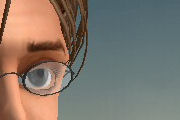 |
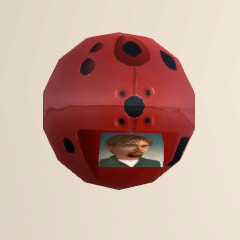 |
A conclusion can be reached... as we bring together the parts of this view of identity as expressed about self and the human element, about avatars and outside representations of self in on-line situatons, about functional or role-playing alternates in other worlds, about identity in communities made up of self and others collaborating and pursuing common objectives, and even hybrid combinations of these. The focus is not always on the self, but the self contributing as a part of a community.
References
Proposed Extra Assessment Criteria
- How well were themes and readings explored during the Digital Cultures course, artifacts created, blogged items and lifestream events brought together into coherent themes and presentation within the artifact?
- How much did the notion of a typographical style of "connectors" and its rapid navigation approach add to the value of the artifact in terms of visual impact and effective link navigation?
- How useful were the creative inputs provided to enrich discussions on the topics presented on the course?

Connectors
This panel experiments with a non-ordered reified set of connectors to the contents and themes of this artifact.
<Connector> ::=
Tokens
Themes Explored
Identity, Projective Identity, Community Identity, Creative Projection, Imagineering, Immersive Experiences, Connections...
Educational value of imagining other worlds.
Us, together, community, collaboration.
Set of Connectors
McAlpine (2005)
Kemlo
Sea City
AI: Avatar Indentity
Bayne (2008)
Ai and Be Chat
NPC
Tolentino (2009),
Hayles (1999, pp23-24)
Weber (2007)
Lave & Wenger (1991)
Boellstorff, 2008
The grammar of "connectors" is itself a work in progress to create a grammar of "contextualised connectors". See Another Planet.